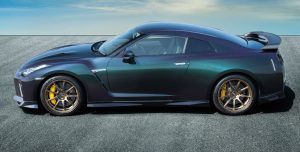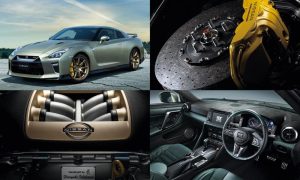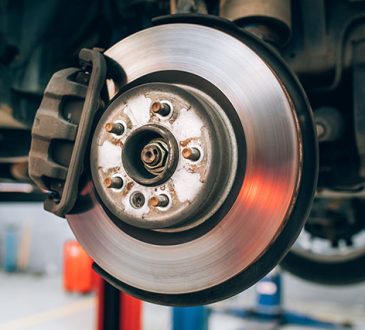
The Nissan GT-R T-spec is the R35 “Godzillafinal “‘s Japanese outing, and with a mix of performance and nostalgia, it promises to go out with a bang. Here is our full review of the Nissan GT-R T-spec- The Fastest Japanese Car in History. Continue reading to learn.
An introduction to Nissan GT-R T-spec, the Fastest Japanese Car in History
Let’s go back in time to 1989 when a small but subtly powerful coupe first appeared on the automobile landscape. It was and still is, a technological demonstration of what a contemporary sports vehicle could be, with features like all-wheel drive, four-wheel steering, twin-turbo, variable torque split, and more.
The number of acronyms used to describe the features, such as ATTESA E-TS (all-wheel drive), Super-HICAS (four-wheel steer), and RB26DETT, was only slightly greater than the list of features (RB-series, 2.6-litre, double-overhead-cam, electronic fuel injection, twin-turbo).
The KGC10 Skyline GT-R from 1972 was the first vehicle to bear the moniker; the R32 Nissan Skyline GT-R, however, was somewhat of a turning point Fastest Japanese Car in History. We’ve now reached the opposite end of the bookcase after quickly progressing through the revised R32 and succeeding R33, R34, and R35 generations of the GT-R. The 2021 R35 Nissan GT-R T-spec is the final GT-R of the current generation, marking the end of an era for the nameplate (for the time being).

The “T,” based on the Premium Luxury-spec GT-R, uses Nissan parts to add the wider front fenders and carbon fiber rear spoiler from the Track-spec, Brembo ceramic brakes from the GT-R Nismo, a distinctive green interior (it sounds shady but it works), and one-of-a-kind 20-inch Rays forged wheels. Nissan only produced 100 units of this final GT-R model, and all Japanese vehicles have since been compliant and virtually sold. There aren’t any more to construct, order, or deliver.
The Detailed Review of the Nissan GT-R T-spec, the Fastest Japanese Car in History
1. The design and style of the Nissan GT-R T-spec
For the most part, the enduring R35 GT-R has held up nicely throughout time. Even after a redesign in 2011 and another refresh in 2017, it is already 15 years old and continues to perform the powerful four-wheeled PlayStation flex.
The T-spec arrangement, which combines the GT-R Track Edition’s naked-carbon spoiler, broader arches, heat-treated titanium exhaust tips, and bronze Rays wheels, looks fantastic with the R35’s hefty stance. The color selections, though, are what really make the deal. You may select Jet Black or Ivory Pearl White, sure, but why would you want to when two previous favorites are making a colorful comeback?
Japan is the only country that pays attention to naming convention details, hence the R34 GT-R V-spec II Nur was the first vehicle to receive the light platinum-green shade known as Millennium Jade. On the T-spec, it returns together with Midnight Purple, which, although making its debut as the R33 GT-hero R’s color in 1995, now has a wild color-flip paint structure more akin to the Midnight Purple Pearl III featured on the R34 GT-R.
Yes, it can appear purple in the shadow, but in the light, it unmistakably appears green. But at night, it’s nearly pitch black, with a continual internal reflection of gold shimmering. Although it appears incredible, I cringe at the thought of the drama involved in having to fix or repaint a panel at any stage.
2. The interior of the car

You’ll adore the interior of Mori Green if you felt the exterior was a little too outgoing. Green, indeed. To be clear, the quilted Alcantara roof lining, top dash, primary trim components, and switches are all black, but the leather and Alcantara seats, door panels, and mid-dash materials are all green. It also works.
Excellent trim quality, good legroom for taller passengers, and some storage space between the seats are all present. It seems a bit silly to mention the GT-315-liter R’s trunk and the fact that there are actually rear seats because neither one is very effective and you probably don’t care.
What is more noticeable, however, is how outdated the more commonplace switchgear around the climate control unit and instrument binnacle is. These parts contain a lot of “Nissan,” which is something we’re all sort of used to by this point, and while this naturally has no impact on the Fastest Japanese Car in History’s performance, it may be the place where the vehicle’s age is most conspicuously visible.
Expect simple, easy-to-read analog instrumentation with the tachometer taking center stage, but don’t anticipate fancy trip statistics or cool graphics as the monochrome display is still the only digital component (along with the current gear readout). The primary multi-function display can handle any clever information you require.
3. Connectivity and Information
I’ll be truthful. Although the GT-R has an 11-speaker Bose premium sound system, I didn’t use it during my brief time behind the wheel. The Nissan team had already preconfigured the 8.0-inch central touch screen’s customizable display to show all the crucial temperature and pressure readouts you need when pushing hard around a racetrack, so I hardly ever used it.
The GranTurismo PlayStation game series was created by Polyphony Digital, who also created this system, which was enhanced for the 2011 update. It’s a very amazing feature of the GT-R and gives a definite nerdy nod to the GT-position R’s as a data-savvy, tech-friendly automobile.
4. Technology & Safety

ANCAP scores at 200 km/h on the front straight are probably not a concern for you, but the GT-R has never been put to the test in Japan or in Europe (by EuroNCAP). It has power brakes and six airbags, including dual front, side, and curtain airbags. but that is all.
You and a 1751kg Japanese road weapon are the only things keeping you focused on the game here; there is no adaptive cruise control or lane-keeping assistance. Since the GT-R was on the list of vehicles that cannot comply with the new ADR 85 side impact design regulations, safety compliance really put an end to the Fastest Japanese Car in History.
5. The price of the Nissan GT-R T-spec, the Fastest Japanese Car in History
The T-spec is in the center of the five GT-R model range at $256,700 before options and on-road expenses. It feels like a contextually excellent value because it costs $121,300 less than a GT-R Nismo ($378,000) and $56,900 less than a Premium Luxury GT-R ($199,800).
This is further supported by the fact that you can no longer purchase one and that investors are attempting to treble their investment, as well as by the fact that a base 911 Turbo costs around $148,200 more on the balance sheet.
An interesting tidbit about me is that I once owned an R33 GT-R V-Spec, which I overpaid for in 2002 and struggled to sell for roughly $35k in 2005. It would currently be worth more than $150k if I had retained it, which is absolutely insane.
My point is that GT-R values are rising everywhere, so congrats if you were able to purchase a T-spec for a price that was even remotely close to retail. Only one of six Nissan “High Performance” dealerships can service your GT-R, and the cost depends on your driving style.
Conclusion:
Writing a review for a car you can’t buy is nearly more difficult because you have no control over what you choose to get in terms of color based on what I say. With the Fastest Japanese Car in History like this, you’ve already decided whether you want one or not. Beyond the statistics, there isn’t much to compare between the GT-R and the 911 Turbo; either you fall into one camp or the other, or you buy both.




